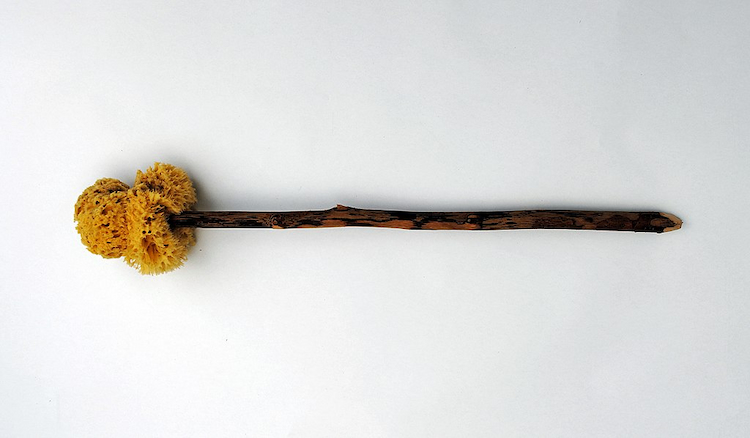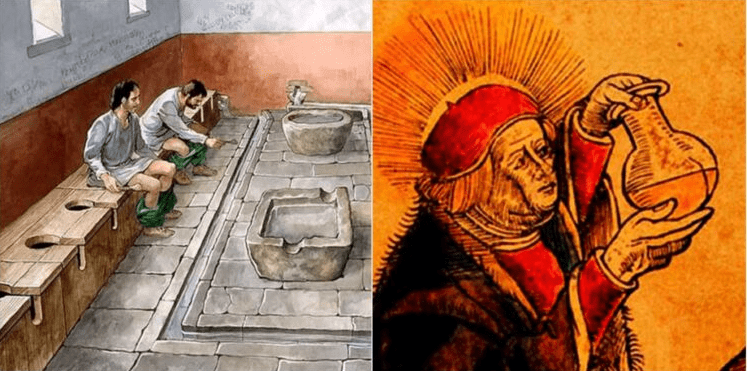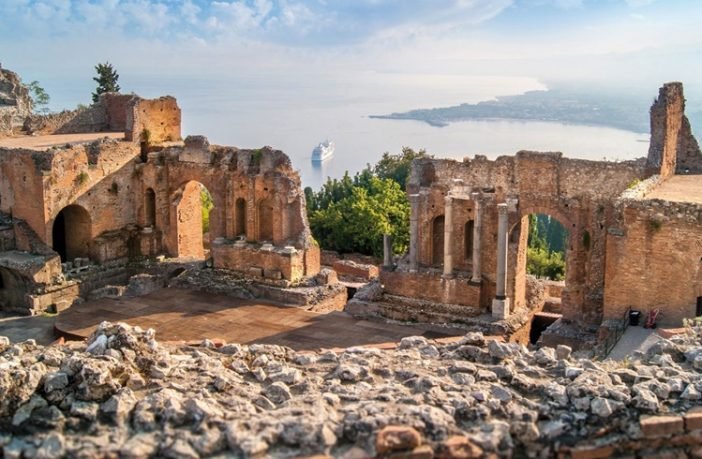There is no doubt that the Roman Empire was one of the most important empires in the world. Some of the fundamental institutions of ancient Roman civilization have contributed greatly to the development of human civilization today. Many of the concepts and structures that emerged in the Roman civilization, especially in the field of law, have changed and evolved to this day! On the other hand, law was not the only subject that the ancient Romans attached great importance to! The Romans were very careful about hygiene and toilets in general. In fact, Roman civilization was a cleaner civilization than its predecessors.
Romans used a sea sponge on a pole instead of toilet paper, so their toilet systems weren’t precisely like contemporary ones, but they did rely on ground-breaking sewage networks that are being used today all over the world.
The Romans created a sanitation system employing covered drains to convey rainfall and waste out of Rome, building on what the Etruscans had done before them.
Eventually, this sanitary system spread across the empire, and historian Pliny the Elder deemed it to be “the most outstanding” of all the accomplishments made by the ancient Romans. This technical achievement made it possible for latrines, toilets, and public baths to proliferate across ancient Rome.
Here is how the Romans advanced toilet usage.
Every aqueduct goes to Rome.
The key to the Romans’ success in cleanliness was a steady supply of water. Roman aqueducts’ marvel of engineering made it possible to bring water directly into the city center from fresh mountain springs and rivers. The censor Appius had ordered the construction of the first waterway, the Aqua Appia, in 312 BC.
11 aqueducts that lead to Rome have been built over the years. They supplied water for the city’s drinking, bathing, and sanitary purposes by transporting it via the Aqua Anio Vetus aqueduct from as far away as the Anio River.
At the end of the first century AD, Frontinus, a water commissioner chosen by Emperor Nerva, set up specialized aqueduct maintenance teams and split the water according to quality. For drinking and cooking, high-quality water was utilized, while sewage, public baths (thermae), and fountains were serviced by low-quality water.
Because of this, Roman inhabitants had quite high expectations for hygiene and expected it to be upheld.

Roman drains
Sewers in Rome performed a variety of tasks and were crucial to the city’s expansion. Sewers in Rome drained surplus water from marshy wetland regions as well as public bath water using vast terra cotta pipework. In order to withstand high water pressure, the Romans were the first to encase these pipelines in concrete.
Between between 60 BC and 24 AD, the Greek writer Strabo wrote on the inventiveness of the Roman sewage system:
The sewers are partially accessible to hay wagons and are covered by a vault of carefully packed stones. Almost every home has water tanks, service pipes, and plenty of streams of water, and the amount of water transported into the city by aqueducts is so vast that rivers like streams run through the city and the sewers.
Around a million people lived in Rome at its height, and their combined trash production was enormous. The Greatest Sewer, also known as Cloaca Maxima and named after the Roman goddess Cloacina from Latin, served this population.
Rome’s sewage infrastructure underwent a transformation thanks to the Cloaca Maxima. It connected Rome’s sewers and dumped waste into the Tiber River when it was constructed in the fourth century BC. Even yet, some Romans continued to use water from the Tiber for agriculture and bathing, thereby bringing sickness and illness back into the city.
Roman restrooms
Foricae, or public latrines, were first constructed in Rome in the second century BC and were frequently funded by gifts from benevolent upper-class individuals. These restrooms were composed of dim spaces surrounded by seats that were interspersed with keyhole-shaped apertures. Romans used the foricae to get rather up close and personal as a result.
Rats and snakes, among other vast numbers of pests, were always nearby. As a result, ladies seldom, and certainly never wealthy women, attended these seedy locations.
Elite Romans seldom needed public forums unless they were in a grave situation. Instead, latrines—private restrooms built over cesspools—were constructed in upper-class dwellings. Many rich Romans may have just used chamber pots that were emptied by slaves because private latrines presumably smelled bad as well.
Additionally, private latrines were frequently isolated from public sewage systems and had to be emptied by the hands of stercorraii, ancient manure removers, in order to stop the spread of vermin to affluent neighborhoods.
Why the innovation was made
Although the Roman sanitation system was among the most advanced in antiquity, the fact that disease spread so swiftly was the driving force for the invention. Many Romans just dumped their trash out the window onto the streets, even with the public foricae.
Even though city workers known as aediles were in charge of keeping the streets clean, stepping stones were required to cross over garbage mounds in the less wealthy areas of the city. The city’s ground level eventually rose as structures were simply constructed on top of trash and debris.
Disease was also spread through the public baths. Roman physicians frequently advised sick patients to take a cleaning bath. The ill typically showered in the afternoons to avoid healthy bathers as part of bathhouse protocol. However, there was no regular cleaning schedule for the baths itself, unlike public restrooms and the streets, thus sickness frequently spread to healthy bathers who arrived the next morning.

The tersorium, a sea sponge on a pole, was what the Romans used to clean themselves after using the bathroom. The sponges, which were stored in a little gutter below the toilets, were frequently cleansed in water that included vinegar and salt. However, hardly everyone brought a sponge, and in public restrooms like spas or even the Colosseum, sharing sponges were common, eventually spreading illnesses like dysentery.





